Download Visualizing a custom product in situ
Transcript
US008654120B2 (12) United States Patent (10) Patent N0.: (45) Date of Patent: Beaver, III et al. (54) VISUALIZINGA CUSTOM PRODUCT IN SITU (75) Inventors: Robert Irven Beaver, III, San Francisco, CA (US); Leslie Young Harvill, Half Moon Bay, CA (US); Richard Harold Bean, Cupertino, CA 2003/0080978 A1* 2004/0017595 2004/0133081 2005/0226498 2005/0258234 A1 A1 A1 A1 5/2003 US 8,654,120 B2 Feb. 18, 2014 Navab et al. ................ .. 345/633 1/2004 7/2004 10/2005 11/2005 Ikeda Teller et a1. Lee Silverbrook et al. (Continued) (Us) FOREIGN PATENT DOCUMENTS (73) Assignee: Zazzle.com, Inc., Redwood City, CA (Us) Notice: Subject to any disclaimer, the term of this patent is extended or adjusted under 35 EP EP W0 1 124 200 A2 1365 358 A2 WO 2009/094724 A1 OTHER PUBLICATIONS U.S.C. 154(b) by 0 days. Hirokazu Kato and Mark Bilinghurst. ARToolkit User Manual. (21) Appl. No.: 13/604,059 (22) Filed: Human Interface Technology Lab, University of Washington, 2000 .* Sep. 5, 2012 (65) 1/2001 11/2003 8/2009 (Continued) Prior Publication Data US 2013/0050205 A1 Primary Examiner * David T Welch Feb. 28, 2013 Assistant Examiner * Jin Ge Related US. Application Data (74) Attorney, Agent, or Firm * Hickman Palermo Truong (63) Continuation of application No. 13/ 539,788, ?led on Jul. 2, 2012. (60) Provisional application No. 61/529,883, ?led on Aug. 31, 201 1. (51) (52) Int. Cl. G06T 15/00 US. Cl. USPC (58) (2011.01) ........................................................ .. 345/419 Field of Classi?cation Search USPC ........................................................ .. 345/419 See application ?le for complete search history. (56) References Cited Becker Bingham Wong LLP (57) ABSTRACT Techniques are described for visualizing a product at the actual location in the environment at Which the product is to be used or displayed. An embodiment of the approaches described herein may be used in the context of a computer based system that can receive and store digital images, receive a request to manufacture a custom framed product including an identi?cation of an image to be framed and a type of mat and/or frame, and display a previeW image of the custom framed product that simulates the actual appearance of the product as closely as possible. With such a system, the U.S. PATENT DOCUMENTS 6,591,011 B1* 8,090,461 B2 8,174,521 B2 2001/0034668 A1 7/2003 Nielsen ....................... .. 382/218 previeW image may be highly realistic under idealized light ing and display conditions. 1/2012 Ohiaeri et al. 5/2012 Harvill et al. 10/2001 Whitworth 26 Claims, 7 Drawing Sheets STORAG E DEVICE MAIN MEMORY DISPLAY ma 501 SERVER m INPUT DEVICE I I I I I CURSOR CONTROL r111 I I I I I PROCESSOR COMMUNICATION INTERFACE NETWORK US 8,654,120 B2 Page 2 (56) Nima Soltani, Mehmet Yilmax, “Using Augrnented-Reality on Pla nar Surfaces for Previewing Décor Changes”. Stanford University EE368 Class Project Spring 2010.* References Cited U.S. PATENT DOCUMENTS Pantida Patirupanusara, “Marker-Based Augmented Reality Magic 2006/0197775 A1 2007/0067179 A1 9/2006 Neal 3/2007 Kerr et al. Book for Anatomical Education”, International Conference on Com 2007/0098234 A1* 5/2007 2007/0124215 A1 5/2007 Simmons 2007/0143082 A1 6/2007 Degnan 2008/0069451 A1* 3/2008 2008/0247674 A1* 10/2008 Walch .... .. 2008/0285854 A1* 11/2008 Kotake et al. ............... .. 382/190 2009/0109214 A1 2009/0177551 A1 Fiala ........................... .. 382/120 Ikeda .......................... .. 382/199 . 382/305 4/2009 Harvill et al. 7/2009 Cue et al. Ryu et al. .................... .. 345/419 Douris et al. ............... .. 345/630 puter and Communication Technologies (ICCCT’2012) May 26-27, 2012 Phuket.* Paul L. Rosin, “Training Cellular Automata for Image Processing”, SCIA 2005, LNCS 3540, pp. 195-204, 2005* Omar Choudary, Vincent Charvillat, Romulus Grigoras, and Pierre Gurdjos, “MARCH: Mobile Augmented Reality for Cultural Heri tage”, MM’09, Oct. 19-24, 2009, Beijing, China.* Pakemon AR Marker in Sep. 2001 (http://wwwpokemastersnet/ 2009/0195538 A1* 2009/0289955 A1* 8/2009 11/2009 2009/0317010 A1 12/2009 Gerhard et a1. “AR tool lets you bring home a virtual Sony Bravia” dated Aug. 29, 2009/0324100 A1* 12/2009 2011 (1 page). Kletter et al. ............... .. 382/217 forums/showthread.php?t:24845).* 2010/0036753 A1 2/2010 Harvill et al. Schalkoff R. J ., “Syntactic Pattern Recognition (Syntrp) Overview”, 2010/0048290 A1* 2010/0066750 A1* 2/2010 Baseley et a1. ................ .. 463/25 3/2010 Yu et a1. . 345/581 Pattern Recognition: Statistical, Structural ad Neural Approaches, Wiley, 68 pages. European Patent Of?ce, “Of?ce Action”, in application No. 2010/0092079 A1* 4/2010 2010/0106283 A1 2010/0185309 A1 4/2010 Harvill et al. 7/2010 Ohiaeri et al. 2010/0185529 A1* 7/2010 Chesnut et al. ............... .. 705/27 2010/0189316 A1* 7/2010 Walch .......... .. 2010/0238166 A1* 9/2010 Tamstorf et al. 2010/0287511 A1* 2011/0098837 A1 2011/0280447 A1* 11/2010 Aller ........................... .. 382/165 . 382/125 12181208.5-1238, dated Dec. 6, 2012, 7 pages. Current Claims in application No. 12181208.5-1238, dated Dec. 2012, 4 pages. . 345/420 U.S. Appl. No. 13/604,059, ?led Sep. 5, 2012, Of?ce Action, Jan. 2, Meier et al. ................. .. 715/848 4/2011 Yucel et al. 11/2011 Conwell ..................... .. 382/103 2013. US. Appl. No. 13/539,788, ?led Jul. 2,2012 Of?ce Action, Jan. 17, 2011/0292451 A1 12/2011 Harvill 2013. 2011/0305368 A1* 12/2011 Osako ......................... .. 382/103 US. Appl. No. 12/790,711, ?led May 28,2010, Of?ce Action, Jan. 3, 2012/0218300 A1* 8/2012 Hayakawa .................. .. 345/633 2013/0057549 A1 2013/0060801 A1 3/ 2013 Beaver et al. 3/ 2013 Beaver et al. OTHER PUBLICATIONS HirokaZu Kato and Mark Billinghurst. Marker tracking and hmd calibration for a videobased augmented reality conferencing system. In Proceedings of the 2nd International Workshop on Augmented Reality (IWAR 99), San Francisco, USA, Oct. 1999.* Mark Fiala. Artag, a ?ducial marker system using digital techniques. In CVPR ’05: Proceedings of the 2005 IEEE Computer Society Conference on ComputerVision and Pattern Recognition (CVPR’05) 2:590-596. IEEE Computer Society, 2005* Ryan A. Beasley, “SemiautonomousMedical Image Segmentation Using Seeded Cellular Automaton Plus Edge Detector”, Interna tional Scholarly Research Network ISRN Signal Processing vol. 2012, Article ID 914232, 9 pages.* Daniel Wagner, Tobias LanglotZ, and Dieter Schmalstieg. Robust and unobtrusive marker tracking on mobile phones. In ISMAR ’08: Pro ceedings of the 7th IEEE/ACM International Symposium on Mixed and Augmented Reality, pp. 121-124, Washington, DC, USA, 2008. IEEE Computer Society.* Johannes Kohler, Alain Pagani, and Didier Stricker, “Detection and Identi?cation Techniques for Markers Used in Computer Vision”, Digital Object Identi?er 10.4230/0ASIcs.VLUDS.2010.36.* Homayoun Bagherinia o Roberto Manduchi, “Robust real-time detection of multi-color markers on a cell phone”, J Real -Time Image Proc., Jun. 3, 2011.* Jun Rekimoto, “Matrix: A Realtime Object Identication and Regis tration Method for Augmented Reality”, Computer Human Interac tion, 1998. Proceedings. 3rd Asia Paci?c, Jul. 15-17, 1998, pp. 63-68.* 2013. HirokaZu Kato and Mark Billnghurst. “ARToolkit User Manual”, Human Interface Technology Lab, University of Washington, dated 2000, 44 pages. HirokaZu Kato and Mark Billinghurst. “Marker Tracking and HMD Calibration for a Videobased Augmented Reality Conferencing Sys tem”, In Proceedings of the 2nd International, Workshop on Aug mented Reality (IWAR 1999), San Francisco, USA Dated Oct. 1999, 10 pages. Mark Fiala, “Artag, A Fiducial Marker System Using Digital Tech niques”, In CVRP ’05: Proceedings of the 2005 IEEE Computer Society Conference on Computer vision and Pattern Recognition (CVPR) 2:590-596. IEEE Computer Society, dated 2005, 7 pages. Ryan A. Beasley, “Semiautonomous Medical Image Segmentation Using Seeded Cellular Automation Plus Edge Detector”, Interna tional Scholarly Research Network ISRN Signal Processing Volume, dated 2012, Article ID 914232, 9 pages. Daniel Wagner, Tobias LanglotZ, and Dieter Schmalstieg, “Robust and Unobtrusive Marker Tracking on Mobile Phones”, In ISMAR ’08: Proceedings of the 7th IEEE/ACM International Symposium on Mixed and Augmented Reality, Washington, DC, USA, Dated 2008, IEEE Computer Society, 4 pages. Johannes Kohler, Alain Pagani, and Didier Stricker, “Detection and Identi?cation Techniques for Markers Used in Computer Vision”, Digital Object Identi?er 10.4230/OASics. VLUDS.2010.36, dated 2010, 9 pages. Homayoun Bagherinia O Roberto Manduchi, “Robust Real-Time Detection of Multi-Color Markers on a Cell Phone”, J Real-Time Image Proc., Dated Jun. 3, 2011, 17 pages. Jun Rekimoto, “Matrix: A Realtime Object Identication and Regis tration Method for Augmented Reality”, Computer Human Interac tion, Dated 1998, Proceedings, 3rd Asia Paci?c, Jul. 15-17, 1998, 6 pages. Jun Rekimoto and Yuji Ayatsuka, “CyberCode: Designing Aug Jun Rekimoto and Yuji Ayatsuka, “CyberCode: Designing Aug mented Reality Environments with Visual Tags”, Proceedings of mented Reality Environments with Visual Tags”, Proceedings of DARE 2000 on Designing, Dated Apr. 2000, 10 pages. DARE 2000 on Designing, Apr. 2000.* Martin HirZer, “Marker Detection for Augmented Reality Applica tions”, GraZ University of Technology, Austria, Dated Oct. 27, 2008, Martin HirZer, “Marker Detection for Augmented Reality Applica tions”, GraZ University of Technology, Austria, Oct. 27, 2008.* W. Lee and W. Woo, “Real-time Color Correction for Marker-based 27 pages. W. Lee and W. Woo, “Real-time Color Correction for Marker-Based Augmented Reality Applications,” International Workshop on Ubiq Augmented Reality Applications”, International Workshop on Ubiq uitous VR (IWUVR2009), pp. 32-55, 2009* uitous VR (IWUVR2009), dated 2009, 4 pages. US 8,654,120 B2 Page 3 (56) References Cited OTHER PUBLICATIONS Nima Soltani, Mehmet Yilmax, “Using Augmented-Reality on Pla nar Surfaced for Previewing Décor Changes”, Stanford University EE368 Class Project Spring, dated 2010, 5 pages. Pantida Patirupanusara, “Marker-Based Augmented Reality Magic Book for Anatomical Education”, International Conference on Com puter and Communication Technologies (ICCCT’2012) May 26-27, 2012, Phuket, 3 pages. Paul L. Rosin, “Training Cellular Automata for Image Processing”, SCIA 2005, LNCS 3540, dated 2005, 10 pages. Omar Choudary, Vincent Charvillat, Romulus Grigoras, and Pierre Gurdjos,“MARCH: Mobile Augmented Reality for Cultural Heri tage”, MM’09, Dated Oct. 19-24, 2009, Beijing, China, 2 pages. Pakemon AR Marker in Sep. 2001 (http://pol<emasters.net/forums/ showthread.php?t:24845) 17 pages. Zhang et al., “Visual Marker Detection and Decoding in AR Systems: A Comparative Study”, IEEE, dated 2002, 10 pages. Internatioanal Searching Authority, “Search Report”, in application No. PCT/2012/053536, dated Nov. 9, 2012, 10 pages. Current Claims PCT/2012/053536, dated Nov. 2012, 5 pages. International Searching Authority, “Search Report” in application No. PCT/US12/53535, dated Feb. 5,2013, 12 pages. Current Claims in application No. PCT/US12/53535, dated Feb. 2013, 5 pages. U.S. Appl. No. 13/539,788, ?led Jul. 2, 2013, Final Of?ce Action, Jun. 5, 2013. * cited by examiner US. Patent Feb. 18, 2014 Sheet 1 017 US 8,654,120 B2 2:H US. Patent Feb. 18, 2014 Sheet 2 of7 US 8,654,120 B2 \210 FIG. 2 US. Patent Feb. 18, 2014 Sheet 3 of7 US 8,654,120 B2 US. Patent Feb. 18, 2014 Sheet 4 of7 wow N?H m?H .GE<< US 8,654,120 B2 US. Patent Feb. 18, 2014 Sheet 5 of7 2;H 6Emw US 8,654,120 B2 asI/, US. Patent Feb. 18, 2014 Sheet 6 of7 > Sm/ .QE m US 8,654,120 B2 > US 8,654,120 B2 1 2 VISUALIZING A CUSTOM PRODUCT IN SITU be applied and speci?es various parameter values relating to the product such as color, siZe, image placement location, or CROSS REFERENCE TO RELATED APPLICATIONS others. The server computer or terminal generates a rendered image shoWing hoW the product Will appear after custom manufacture With the speci?ed image applied. The user approves the rendered image and places an order for the product. A manufacturer receives the order data, manufac This application claims under 35 U.S.C. § 120 the bene?t as a Continuation of application Ser. No. 13/539,788, ?led Jul. 2, 2012, Which claims the bene?t under 35 U.S.C. §119(e) of tures the product as speci?ed and provides the custom manu factured product to the user. Provisional Application No. 61/529,883, ?led Aug. 31, 2011, the entire contents of each of Which is hereby incorporated by reference as if fully set forth herein. The applicant(s) hereby rescind any disclaimer of claim scope in the parent applica tion(s) or the prosecution history thereof and advise the USPTO that the claims in this application may be broader than any claim in the parent application(s). This application is related to US. application Ser. No. 11/925,716, ?led Oct. 26, 2007, US. application Ser. No. 12/257,016, ?led Oct. 23, 2008, and US. application Ser. No. 12/546,582, ?ledAug. 24, 2009, the entire contents of each of Which are hereby incorporated by reference for all purposes One type of product of interestinot offered in typical prior systemsiis framed or mounted materials. A frame may com prise Wood molding, metal pieces, or plastics. The mounting may include one or more mats or may comprise ?oat mount ing. The materials may include digital images of ?lm photo graphs, original digital art, prints, paintings, animation cells, or any other graphical Work or Work of the visual arts. Indi vidualiZed online design and custom manufacture of such framed and mounted material is either impossible or imper fect using existing systems. 20 BRIEF DESCRIPTION OF DRAWINGS as if fully set forth herein. FIG. 1 is a ?owchart of a process for visualiZing a custom COPYRIGHT STATEMENT product in-situ; A portion of the disclosure of this patent document con 25 tains material Which is subject to copyright protection. The copyright oWner has no objection to the facsimile reproduc tion by anyone of the patent document or the patent disclosure as it appears in the Patent and Trademark Of?ce patent ?le or records, but otherWise reserves all copyright rights Whatso FIG. 2 illustrates an example marker. FIG. 3 illustrates an example marker. FIGS. 4A-B (collectively FIG. 4) is a ?owchart of a process for characterizing a user site With a marker. FIG. 5 is a ?oWchart of a process for building a digital asset 30 With found user site data. FIG. 6 is a block diagram that illustrates a computer system ever. With Which the techniques herein may be implemented. APPENDIX DATA DESCRIPTION OF EXAMPLE EMBODIMENTS This application includes a transmittal under 37 CFR 35 In the folloWing description, for the purposes of explana §1.52(e) of a Computer Program Listing Appendix. The tion, numerous speci?c details are set forth in order to provide Appendix, Which comprises the beloW-listed text ?le that is IBM PC/XT/AT compatible and MS-WindoWs compatible. All of the material disclosed in the Computer Program Listing Appendix can be found at the US. Patent and Trademark 40 knoWn structures and devices are shoWn in block diagram O?ice archives and is hereby incorporated by reference into form in order to avoid unnecessarily obscuring the present the present application for all purposes as if fully set forth herein. Object Description: ThinningByCellularAutomata.txt, siZe 41,902 Bytes, created: Aug. 25, 2011 45 BACKGROUND store digital images, receive a request to manufacture a cus 50 approaches” are approaches that could be pursued, but not or pursued. Therefore, unless otherWise indicated, it should not be assumed that any of the approaches that are so 55 identi?cation as “background” or “prior approaches.” Several computer-automated systems are presently avail items. In a typical system, an end user or consumer uses a general purpose computer terminal, such as a personal com under idealiZed lighting and display conditions. HoWever, the appearance of actual framed images may vary Widely in dif ferent environments. For example, custom framed products typically are displayed by hanging on a Wall, but the appear ance of the product may vary greatly in environments such as interior rooms With different levels of lighting, kinds of light ing, kinds of Walls, Wallpaper, re?ective surfaces, or other able With Which end users or consumers of products may design, previeW, and order custom-manufactured products that incorporate images or graphics. Examples of products include Wearing apparel, beverage vessels, and accessory previeW image of the custom framed product that simulates the actual appearance of the product as closely as possible. With such a system, the previeW image may be highly realistic necessarily approaches that have been previously conceived described actually qualify as prior art merely by virtue of invention. Visualizing a Custom Product In Situ An embodiment of the approaches herein may be used in the context of a computer-based system that can receive and tom framed product including an identi?cation of an image to be framed and a type of mat and/or frame, and display a Certain approaches described in certain sections of this disclosure and identi?ed as “background” or “prior a thorough understanding of the present invention. It Will be apparent, hoWever, that the present invention may be prac ticed Without these speci?c details. In other instances, Well 60 background environment. Frame elements and mats are represented in 3D models With parameteriZed values to permit resiZing and use With different visual material. For example, 3D models of frame elements may be prepared by placing actual frame stick mate puter With a broWser, to connect over a public netWork to a server computer. The user selects a stored graphic image, or 65 rial in a ?xed rig adjacent to a ?rst surface mirror; a laser is uploads a digital image that the user obtained or made. The user selects a type of product to Which the graphic image is to projected at a knoWn angle against the surface of the frame stick material and a digital image is formed of the molding US 8,654,120 B2 3 4 together With the laser line and a programmed computer the ?rst surface mirror. A subsequent image is taken With the stored in the service in association With data describing the marker. For example, the service may store metadata indicat ing that a particular marker is 81/2><11 inches, or metric size A4, or any other suitable size, and the user Will be prompted laser line shuttered off, to capture an actual surface texture of or otherWise required to print the marker on a sheet of that the molding. The resulting perspective vieW of the molding size. deduces, from the laser line, a geometry of a front surface of the frame stick material and the rear pro?le is obtained from surface texture is ?attened to permit subsequent mapping of The user positions (block 103) the paper With marker in the ?attened texture onto a computer-generated 3D model of their environment at a location at Which the user Wishes to the molding. For mats, actual thickness may be manually visualize the custom manufactured product. For example, the measured and entered as a parameter value, and a ?at plan user attaches the sheet of paper to a Wall on Which the user vieW digital image of the mat texture may be taken and used in 3D texture mapping. In an embodiment, the previeW image of a custom framed product may be modi?ed in a Way that closely simulates the actual appearance that the custom framed product Will have in a particular environment. The approaches herein offer numerous bene?ts in compari son to prior approaches. For example, the design of the example markers shoWn herein and the nature of recognition is different for characterizing the geometry of the space. The plans to mount or display a customizable product. The user takes (block 104) a digital photo of the marker in-situ. In this context, “in situ” means at the actual location in the environment at Which a custom product is to be used or displayed. The user transmits (block 105) the photo to an In-Situ Visualization service. As further described herein, the service uses the marker to characterize (block 106) the position, orientation and lighting 20 design of the example markers and the processing logic of the user photograph. The service produces (block 107) a digital asset that visu described herein alloWs for both the characterization of the alizes a custom product in-situ. The digital asset may be geometry and also the lighting. This robust characterization enables ensuring that geometry of a visualized product is accurate in the characterized environment. In addition, the logic herein can adjust the nature of the rendering to compen produced such that the custom product as visualized by the digital asset re?ects the detected position and orientation of the marker in the user photograph and the lighting at the actual location of the marker. For example, the digital asset 25 may be a digital graphic image that the service can cause to be displayed on the user computer terminal to give the user a sate for the color or lighting of the user environment based on a user image of a single marker and single user-provided photograph. Further, the system(s) herein accommodate the dynamic simulated vieW of a realistic appearance of the custom manu 30 factured product as if actually mounted or displayed in the nature of custom manufactured products, Which can be con user environment at the location Where the user previously ?gured both in the nature of the assembly as Well as the nature positioned the sheet. Instead of a digital image, the digital of the embellishment. The system(s) contemplate the sharing asset may be digital video, digital audio/visual program, or graphical model of the custom product. In an embodiment, displaying the digital asset as described in this paragraph may be implemented in part as described in Us. application Ser. No. 11/925,716, ?led Oct. 6, 2007, the entire contents of Which are hereby incorporated by reference for all purposes of these characterized environments in an online marketplace together With con?gured/designed product to be visualized in-situ. The “complete” nature of the system(s) contemplate the characterization of product for con?guration/embellish ment, enabling users to con?gure/embellish and visualizing the resultant embodiments in characterized environments. For purposes of illustrating the in-situ visualization system and method, embodiments described herein refer to a custom 35 as if fully set forth herein. 40 framed product. HoWever, the in-situ visualization system Marker In an embodiment, a marker may have the folloWing char and method may also be used to visualize other mountable or displayable custom products for Which it is desirable to pro vide an in-situ visualization of the custom product to users. acteristics. The marker may have one or more linear compo 45 nents that may be recognized, using image recognition tech 50 niques, as lines in a photograph taken by a digital camera. For example, in an embodiment the marker comprises a plurality of lines that are typically 0.25" to 0.5" inches in Width or thickness. Linear components of these sizes are expected to appear su?iciently thick or bold in a user image to permit Examples of other custom products to Which the in-situ visu alization system and method may be applied include custom manufactured products With user provided images or text (see, for example, related U.S. patent application Ser. No. 12/546,582) and a product on Which a customized embroi dery has been placed (see, for example, related U.S. patent application Ser. No. 12/257,016). computer-based recognition of the lines in the user image, even in the presence of background user environmental ele A Process for Visualizing a Custom Product In-Situ With reference to FIG. 1, in an embodiment, a data pro cessing process comprises the folloWing general steps: 55 A digital representation of a marker is transmitted (block 101) to a user. For example, the user, Who may be an end consumer of a commercial custom manufactured product service, uses a computer terminal to connect to a server com puter associated With the service. The user either establishes an account With the service or logs into an existing account. The user initiates a process of designing a custom product. The user is prompted to doWnload or print a digital ?le, such as a PDF document or graphical image ?le, containing the 60 representation of the marker. 65 The user prints (block 102) the marker on a sheet of paper. In an embodiment, the printed size of the sheet of paper is Aspects of components of the preceding general process are noW described. ments such as Wall textures, other mounted materials, doors, Wall comers, ?oors, and other elements. Lines that are too thin may be di?icult to recognize as part of the marker, Whereas lines that are too thick may be di?icult to accurately position in space in relation to the environment. In an embodiment, the marker has a border When printed and photographed, so that the linear components are isolated from other picture elements in the environment. The border may be a blank margin. Thus, in an embodiment, a blank border separates the linear components from an edge of a printed sheet shoWing the marker. Therefore, the border enables better recognition of the marker from the environ ment and breaks or separates the connectivity of the linear components from other image elements that are not part of the marker. US 8,654,120 B2 6 5 pling points and can modify the appearance of a digital asset In an embodiment, the linear components are arranged to form a connectivity graph. The connectivity graph is any to simulate the actual lighting in the user environment. association of arcs that are connected at points termed nodes Colors may comprise black, White, and gray, in one embodiment and can facilitate different types of image analy to form a plurality of enclosed regions termed polytopes. In sis. For example, if the computer cannot detect a gray space in a candidate marker in the user image, then the computer can determine that the user image has excessive White level or is “bloWn out” and needs to be retaken to permit accurate rec an embodiment, each particular marker has a particular con nectivity graph With different connectivities as compared to other marker instances as determined by a plurality of fea tures. Example features that may differentiate one connectiv ognition. ity graph from another include aspects of line intersections, number of lines, and number of enclosed regions. Embodi The lighting in an environment can appear to have a color bias When recorded by a digital device such as a digital camera. This bias results because the light illuminating the ments do not require use of any particular marker format or style; for example, While one example disclosed herein has the general appearance of a rectangular grid, many other geometric arrangements may be used. What is important is environment may be one or more of a variety of different types including sunlight, incandescent, mercury vapor, ?uo rescent, etc. that have particular spectral distributions that the that the service has stored metadata describing a reference connectivity graph that is expected to be seen in the user’s human eye sees as White, but that the digital device records as a particular color. In one embodiment, the marker includes a medium tone digital image of the marker and environment. In an embodiment, the form of the connectivity graph of the marker is distinct in orientation. For example, each marker is gray area that permits accurate recognition of a lighting bias 20 in the user image. Additionally or alternatively, pastel color provided With one or more features such that changing an orientation or rotation of the marker yields a different visual tones may be used to assist user recognition of color bias in appearance. This characteristic enables computer analysis of the user digital image to determine the actual orientation that useful to include a knoWn green tone or pink tone in selected Was used for the marker When it Was placed in the user the lighting of the user environment. For example it may be areas of the reference marker to aid in recognizing Whether 25 environment. In an embodiment, the spatial relationships of the connec tivity graph are recorded, and used as a means of detecting the color bias to the digital asset that simulates the custom manu factured product in the environment under the same lighting. Example Markers position and orientation of the marker in the photograph. For example, detecting may involve seeking to recogniZe knoWn 30 features of nodes, lines, and polytopes in a reference marker that match the same features in the user digital image. FIG. 2 and FIG. 3 illustrate examples of markers. Referring ?rst to FIG. 2, in one embodiment, a marker resembles a trademark of a business entity, in this case, the Z logo of ZaZZle Inc., RedWood City, Calif. Marker 202 comprises a In an embodiment, features of nodes include a count of nodes in the entire marker graph, a count of arcs connecting at a given node, and an adjacency of a node to polytopes having the user environment is principally illuminated using ?uores cent lamps or incandescent lamps and applying a similar 35 plurality of arcs 204. Example nodes 206A, 206B are at intersections of arcs, and the marker de?nes a plurality of polytopes of Which polytopes 208A, 208B, 208C are a given count of nodes. These features of nodes can be used to differentiate one connectivity graph from another. That is, if examples. Corner portions 210 of the marker 202 are non the count of nodes, count of arcs connecting at a given node, and an adjacency to a count of polytopes of a given node count uniform With respect to the manner of arc intersection so that are knoWn, then the same features can be identi?ed When the an orientation of the marker may be detected using computer 40 user’s digital image is processed, and the marker can be recogniZed in the user’s digital image only When the counts and adjacency match. In an embodiment, features of lines also may be used for detection and differentiation. In an embodiment, relevant fea tures include the number of lines (arcs) or count of arcs in the The count of arcs associated With a particular node also varies; for example, node 206A is at an intersection of four (4) arcs Whereas node 206B is at an intersection of three (3) arcs. 45 marker graph, and the adjacency of each line to polytopes of a given arc count. In an embodiment, features of enclosed regions or poly topes also may be used for detection and differentiation. In an embodiment, features relevant to the number of enclosed 50 regions (polytopes) include a count of polytopes in the marker graph and a count of the nodes in each polytope. Therefore When the marker 202 is recogniZed in a user image the marker may be characterized in terms of the number of nodes and the count of arcs at each node and compared to reference data describing a reference marker to determine if a match occurs. The marker 202 also may be characterized by the number of adjacent polytopes associated With a node; for example, node 206A is associated With four (4) adjacent polytopes Whereas node 206B has three (3) adj acencies. Fur ther, the characteriZation data for a particular marker enables e?icient image processing; for example, an image recogni In certain embodiments, the connectivity graph of lines may also be user-readable as a symbol, graphic, or legend, image analysis techniques. tion algorithm may be con?gured to reject a candidate item such as a company’s brand or trademark. In an embodiment, one or more open spaces are provided in recogniZed in a user image as a potential matching marker at the earliest time at Which it is determined that a characteriza tion of the item does not match a reference marker. For the printed marker and may be unprinted or printed With light example, as the computer proceeds to recogniZe a candidate colors or tones that provide a means of detecting the lighting of the user site. The open spaces may be termed “light sam 55 60 pling points”. Additionally, full printing areas of the line to considering another candidate item. The number of characterization items for a marker prefer graph of the marker are known, and may be termed “dark sampling points”. If the “light sampling points” and “dark sampling points” are detected in a user image of the marker in the environment, then based on luminance values or other item, as soon as the computer determines that the candidate item has too feW or too many arcs, nodes, or polytopes, the candidate item may be rejected and the process may move on ably is relatively small to avoid requiring unnecessarily large 65 amounts of data processing time. For example it is knoWn that data representing the sampling points, the computer can When a marker is complex and has a large number of arcs, determine a lighting gradient that exists betWeen the sam nodes and polytopes, the processing time and storage space US 8,654,120 B2 7 8 needed to accurately recognize the marker may become pro With threshold neighborhood inputs. In the cellular automata hibitive. Therefore, markers having relatively simple connec tivity graphs are preferred. eration form instructions or opcodes to an automaton that approach, neighbor pixels of a particular pixel under consid produces a result pixel value based on the input, and the As another example, in FIG. 3, a marker resembles a grid of rectangles. The arrangement of FIG. 3 offers the bene?t of ?tting a rectangular letter sized sheet of paper Well. In both FIG. 2, FIG. 3, the marker includes a blank border around the perimeter of the marker, lines that are large enough particular pixel is then replaced With the result pixel value. Unlike prior applications of cellular automata, in the present approach cellular automata are applied to line thinning. The array of pixels is traversed (block 403). When a true pixel is found, a candidate graph is built by traversing con nected pixels. For example, When connected pixels are iden to detect in a user image, and other features such as lines, intersections, and enclosed regions that are uniquely recog nizable against a background. Further, FIG. 2, FIG. 3 repre sent markers that incorporate shapes or graphs that are oth ti?ed then a node is recognized. If no true pixels are found, the erWise uncommon in a natural setting, Which improves the in memory, if the node, arc or polytope counts are greater that performance of the recognition process herein. of the reference graph, the candidate graph is disposed, and algorithm ends. As the candidate graph is created and stored stored values for all connected pixels of the current line net Work are set to false. In one embodiment, the candidate graph In various embodiments, the service may provide a marker that is particular to the end user or customer, or may provide a plurality of different markers that the end user may select from and doWnload. For example, different markers may be associated With or tied to different products, services, users, or classes of products. For example, different products may 20 have different sizes and the user may Wish to visualize tWo By building and using connectivity graphs, the process different products of different sizes in the same general envi may rapidly discard candidate graphs that do not meet one or ronment; in such a case the service may provide tWo different markers of different sizes. Different products of different types also may Warrant the use of different markers. For example, a custom painted or printed stretch canvas product might use a different kind of marker than a custom decorated skateboard deck. In-Situ Visualization Service In an embodiment, a computer-based in-situ visualization 25 image may be needed. For example, in the present approach there is no need to complete the recognition of a candidate graph that groWs excessively large; it is simply discarded at 30 of the reference graph, the candidate graph is disposed. If a candidate graph’s full set of connectivity characteris building a digital asset using the found user site data and a 35 A Process for Characterizing the User Site With a Marker In an embodiment, characterizing the user site With the tics matches (block 404) the reference graph, the algorithm continues at block 407. If a candidate graph is discarded or disposed and there are more true pixels in the array of pixels marker generally comprises digitally recognizing a con (block 405), then the traversal of the array of pixels continues at block 403. OtherWise, the algorithm ends (block 406) pos 40 sibly With a noti?cation to the user that the marker could not be detected in the user photograph. Once there is a matching candidate graph, the orientation a printed (block 102) copy of a marker, placed (block 103) the and position of the matching graph in the user photograph is found by calculating (block 407) a marker transform, Which printed marker in the user environment at a location at Which a custom product Will be displayed or mounted, taken (block 104) a digital photograph or image of the environment includ the earliest opportunity, increasing performance and reducing time to recognize the marker. On completion of the candidate graph, if the node, arc or polytope counts are less than those software elements that are con?gured to perform the follow ing general tasks: characterizing the user site With the marker; nected graph based on a reference graph using a process illustrated in ?owchart form in FIG. 4. First, assume that as described above, a user has produced more connectivity criteria of the reference graph. This pro cess is unlike other approaches in Which complete recogni tion and characterization of a candidate graph in the user service comprises one or more computer programs or other photograph or other digital image; rendering the digital asset. and the reference graph are represented in a computer using a Winged edge data structure. Other data structures and models may be used to represent candidate connectivity graph and the reference connectivity graph and the invention is not limited to a Winged edge data structure. 45 maps knoWn nodes in the reference graph to found nodes in ing the marker, and uploaded (block 1 05) the user photograph the matching graph. Thus, When a matching connectivity to the service. For example, the user photograph could be a digital image of a portion of the interior of a room in Which the marker has been attached to a Wall. graph is identi?ed, the pixel coordinates Within the user image of nodes, arcs and polytopes are knoWn, and may be mapped using the marker transform to the reference graph. The process of FIG. 4 may be implemented in computer logic to recognize the marker in the user photograph, for example, as part of using (block 106) the user photograph of 50 Once the marker transform is determined, light sampling points may be found (block 408) in the photograph. These the marker to characterize the user photo, the location and orientation of the marker, and lighting at the marker location: A linear image is produced by ?ltering (block 401) the user 55 photograph so that linear features in the size range of the marker lines are left and other linear and non-linear features an edge ?lter may be used. The result is an output image 60 size range of the marker lines as black on a White background. The linear image is further ?ltered (block 402) into a Bool ean array of pixels using cellular automata, so that linear elements are one (1) pixel in Width, and each line is repre sented in the image by its pixels being set to true. Example value tables for cellular automata are attached in the Appen dix. The cellular automata approach uses a rule-based system points are used to determine a White point for the image, and a luminance gradient or map for rendering the digital asset. For example, the coordinates in reference space of a ?rst light sampling point may be transformed, using the marker trans form, to equivalent points in user image space; at those points, are ?ltered out. For example, a thresholded bandpass ?lter or Which When displayed comprises only linear features in the Point mapping techniques using singular value decomposi tion may be used, for example, to determine the marker trans form. pixel values may be sampled or obtained to determine a baseline White value for the user image. In an embodiment, the luminance gradient is a set of values representing a range of the magnitude of re?ected light across the user environ ment, and may be represented by a set of delta values in image 65 space, for example, A” and Av values. The marker transform may also be used (block 409) to ?nd the dark sampling points in the user image, Which are used to US 8,654,120 B2 10 set a black point for rendering the digital asset. Thus, infor Computer system 600 also includes a main memory 606, mation may be extrapolated about the user environment such as a random access memory (RAM) or other dynamic including its geometry and lighting, and appropriate changes storage device, coupled to bus 602 for storing information and may be applied in to the image in terms of chroma spectrum, luminance, brightness, and other attributes so that the image instructions to be executed by processor 604. Main memory 606 also may be used for storing temporary variables or other intermediate information during execution of instructions to be executed by processor 604. Such instructions, when stored appears, on the user’s computer screen, as similar as possible to the actual appearance of the custom manufactured product when it is installed in the user environment. A Process for Building a Digital Asset with Found User Site Data In an embodiment, building a digital asset using the found user site data and a photograph or other digital image may involve the steps illustrated in the ?owchart of FIG. 5. Initially, a digital asset is built using layers as follows. The in non-transitory storage media accessible to processor 604, render computer system 600 into a special-purpose machine that is customiZed to perform the operations speci?ed in the instructions. Computer system 600 further includes a read only memory (ROM) 608 or other static storage device coupled to bus 602 for storing static information and instructions for processor 604. A storage device 610, such as a magnetic disk or optical user photograph is adjusted (block 501) using the data obtained from the light sampling points and the dark sam pling points. disk, is provided and coupled to bus 602 for storing informa A custom product reference is placed (block 502) into the user photograph using the marker transform for placement; tion and instructions. Computer system 600 may be coupled via bus 602 to a display 612, such as a cathode ray tube (CRT), for displaying information to a computer user. An input device 614, includ the custom product reference may comprise a unique name or identi?er, a geometric place holder such as a rectangle within a coordinate system, and that coordinate system transformed 20 ing alphanumeric and other keys, is coupled to bus 602 for communicating information and command selections to pro using the marker transform, which represents the custom manufactured product in which the user is interested. The luminance gradient is applied (block 503) to modify 25 cessor 604.Another type of user input device is cursor control 616, such as a mouse, a trackball, or cursor direction keys for the luminance of the custom product to match the light gra communicating direction information and command selec dient of the user photograph based on a point of known luminance in the user image space. tions to processor 604 and for controlling cursor movement on display 612. The input device typically has two degrees of Second, the custom product is displayed (block 504) using the following steps. In an embodiment, the user chooses the custom product and its attributes by interacting with the ser vice. In an embodiment, the user’s in-situ digital asset is loaded. In an embodiment, the rendering asset for the custom freedom in two axes, a ?rst axis (e.g., x) and a second axis 30 (e.g., y), that allows the device to specify positions in a plane. Computer system 600 may implement the techniques described herein using customized hard-wired logic, one or Finally, in an embodiment, the in-situ asset is rendered and more ASICs or FPGAs, ?rmware and/or program logic which in combination with the computer system causes or programs computer system 600 to be a special-purpose machine. According to one embodiment, the techniques herein are sent to the user display unit or browser. In an embodiment, performed by computer system 600 in response to processor product is con?gured. In an embodiment, the custom product reference is set to the Custom Product asset. displaying the custom product as described in this paragraph may be implemented as described in US. application Ser. No. 11/925,716, ?led Oct. 26, 2007, the entire contents of which are hereby incorporated by reference for all purposes as if fully set forth herein. 35 604 executing one or more sequences of one or more instruc 40 Implementation MechanismiHardware Overview tions contained in main memory 606. Such instructions may be read into main memory 606 from another storage medium, such as storage device 610. Execution of the sequences of instructions contained in main memory 606 causes processor 604 to perform the process steps described herein. In altema tive embodiments, hard-wired circuitry may be used in place According to one embodiment, the techniques described puting devices. The special-purpose computing devices may of or in combination with software instructions. The term “storage media” as used herein refers to any be hard-wired to perform the techniques, or may include non-transitory media that store data and/or instructions that digital electronic devices such as one or more application cause a machine to operation in a speci?c fashion. Such herein are implemented by one or more special-purpose com 45 speci?c integrated circuits (ASICs) or ?eld programmable gate arrays (FPGAs) that are persistently programmed to 50 or magnetic disks, such as storage device 610. Volatile media includes dynamic memory, such as main memory 606. Com perform the techniques, or may include one or more general purpose hardware processors programmed to perform the techniques pursuant to program instructions in ?rmware, memory, other storage, or a combination. Such special-pur pose computing devices may also combine custom hard wired logic, ASICs, or FPGAs with custom programming to 55 with patterns of holes, a RAM, a PROM, and EPROM, a FLASH-EPROM, NVRAM, any other memory chip or car tridge. 60 logic to implement the techniques. For example, FIG. 6 is a block diagram that illustrates a computer system 600. Computer system 600 includes a bus 602 or other communication mechanism for communicating information, and a hardware processor 604 coupled with bus 602 for processing information. Hardware processor 604 may be, for example, a general purpose microprocessor. mon forms of storage media include, for example, a ?oppy disk, a ?exible disk, hard disk, solid state drive, magnetic tape, or any other magnetic data storage medium, a CD-ROM, any other optical data storage medium, any physical medium accomplish the techniques. The special-purpose computing devices may be desktop computer systems, portable com puter systems, handheld devices, networking devices or any other device that incorporates hard-wired and/or program storage media may comprise non-volatile media and/or vola tile media. Non-volatile media includes, for example, optical 65 Storage media is distinct from but may be used in conjunc tion with transmission media. Transmission media partici pates in transferring information between storage media. For example, transmission media includes coaxial cables, copper wire and ?ber optics, including the wires that comprise bus 602. Transmission media can also take the form of acoustic or light waves, such as those generated during radio-wave and infra-red data communications. US 8,654,120 B2 11 12 claim in any Way. The speci?cation and draWings are, accord Various forms of media may be involved in carrying one or more sequences of one or more instructions to processor 604 ingly, to be regarded in an illustrative rather than a restrictive for execution. For example, the instructions may initially be sense. carried on a magnetic disk or solid state drive of a remote What is claimed is: 1. A method for visualizing a custom product in situ, the computer. The remote computer can load the instructions into its dynamic memory and send the instructions over a tele phone line using a modem. A modern local to computer system 600 can receive the data on the telephone line and use method comprising: storing ?rst data that represents a reference connectivity graph of a marker; obtaining a digital image of at least the marker; analyZing the digital image to generate second data that represents a candidate connectivity graph; based at least in part upon ?rst data and the second data, an infra-red transmitter to convert the data to an infra-red signal. An infra-red detector can receive the data carried in the infra-red signal and appropriate circuitry can place the data on bus 602. Bus 602 carries the data to main memory 606, from Which processor 604 retrieves and executes the instruc tions. The instructions received by main memory 606 may optionally be stored on storage device 610 either before or determining Whether the candidate connectivity graph matches the reference connectivity graph; in response to determining that the candidate connectivity after execution by processor 604. Computer system 600 also includes a communication interface 618 coupled to bus 602. Communication interface 618 provides a tWo-Way data communication coupling to a network link 620 that is connected to a local netWork 622. For graph matches the reference connectivity graph, gener ating third data that at least maps nodes of the reference connectivity graph to nodes of the candidate connectiv 20 example, communication interface 618 may be an integrated visualiZes the custom product in the digital image; services digital netWork (ISDN) card, cable modem, satellite Wherein using at least the third data to build a digital asset modem, or a modem to provide a data communication con nection to a corresponding type of telephone line. As another example, communication interface 618 may be a local area netWork (LAN) card to provide a data communication con nection to a compatible LAN. Wireless links may also be implemented. In any such implementation, communication interface 618 sends and receives electrical, electromagnetic or optical signals that carry digital data streams representing various types of information. Network link 620 typically provides data communication 25 that at least maps nodes of the reference connectivity graph to nodes of the candidate connectivity graph; 30 Wherein the method is performed by one or more comput ing devices. 2. The method of claim 1, Wherein the ?rst data indicates one or more of: example, netWork link 620 may provide a connection through a count of the nodes of the reference connectivity graph, 35 a count of arcs connecting at a particular node of the ref erence connectivity graph, ment operated by an Internet Service Provider (ISP) 626. ISP 626 in turn provides data communication services through the World Wide packet data communication netWork noW com monly referred to as the “Internet” 628. Local netWork 622 and Internet 628 both use electrical, electromagnetic or opti that visualiZes the custom product in the digital image comprises determining an adjustment to a color, bright ness, or luminance of at least a portion of an image of the custom product based at least in part on the third data through one or more netWorks to other data devices. For local netWork 622 to a host computer 624 or to data equip ity graph; using at least the third data to build a digital asset that a count of lines or arcs of the reference connectivity graph, a count of polytopes of the reference connectivity graph, or a count of nodes of a particular polytope of the reference 40 cal signals that carry digital data streams. The signals through connectivity graph. 3. The method of claim 1, Wherein the second data indi the various netWorks and the signals on netWork link 620 and cates one or more of: through communication interface 618, Which carry the digital a count of the nodes of the reference connectivity graph, data to and from computer system 600, are example forms of transmission media. Computer system 600 can send messages and receive data, a count of arcs connecting at a particular node of the ref 45 including program code, through the netWork(s), netWork a count of polytopes of the reference connectivity graph, or a count of nodes of a particular polytope of the reference link 620 and communication interface 618. In the Internet example, a server 630 might transmit a requested code for an application program through Internet 628, ISP 626, local netWork 622 and communication interface 618. The received code may be executed by processor 604 as it is received, and/or stored in storage device 610, or other non-volatile storage for later execution. Extensions and Alternatives connectivity graph. 50 4. The method of claim 1, Wherein the marker comprises one or more colored open spaces for aiding a digital image analysis technique applied to the digital image in detecting lighting in the environment in Which the marker Was photo graphed. 55 In the foregoing speci?cation, embodiments of the inven 5. The method of claim 4, Wherein at least one of the one or more colored open spaces is colored in a medium tone gray or a pastel color tone for aiding the digital image analysis tech nique in detecting color bias of lighting in the environment in tion have been described With reference to numerous speci?c details that may vary from implementation to implementa tion. Thus, the sole and exclusive indicator of What is the invention, and is intended by the applicants to be the inven tion, is the set of claims that issue from this application, in the speci?c form in Which such claims issue, including any sub sequent correction. Any de?nitions expressly set forth herein for terms contained in such claims shall govern the meaning erence connectivity graph, a count of lines or arcs of the reference connectivity graph, Which the marker Was photographed. 60 6. The method of claim 1, further comprising applying a thresholded bandpass ?lter or an edge ?lter to the digital image to produce a digital image that comprises linear fea tures in a siZe range of lines of the marker as black on a White background. element, property, feature, advantage or attribute that is not 7. The method of claim 6, further comprising using a rule based cellular automata With thresholded neighborhood expressly recited in a claim should limit the scope of such inputs to thin at least one of the linear features. of such terms as used in the claims. Hence, no limitation, 65 US 8,654,120 B2 14 13 8. The method of claim 1, further comprising determining 16. The one or more non-transitory computer-readable media of claim 14, Wherein the second data indicates one or an orientation or position of the marker in the digital image more of: using the third data. 9. The method of claim 8, further comprising using a point a count of the nodes of the reference connectivity graph, a count of arcs connecting at a particular node of the ref mapping technique involving singular value decomposition erence connectivity graph, to determine the third data. a count of lines or arcs of the reference connectivity graph, 10. The method of claim 1, further comprising using the third data to transform coordinates of a light sampling point in a count of polytopes of the reference connectivity graph, or a count of nodes of a particular polytope of the reference connectivity graph. a coordinate space of the marker to an equivalent point in a coordinate space of the digital image. 11. The method of claim 10, further comprising sampling 17. The one or more non-transitory computer-readable media of claim 14, Wherein the marker comprises one or more pixel values at the equivalent point to determine a baseline White value. nique applied to the digital image in detecting lighting in the colored open spaces for aiding a digital image analysis tech environment in Which the marker Was photographed. 12. The method of claim 1, Wherein building the digital asset comprises placing a custom product reference into the 18. The one or more non-transitory computer-readable media of claim 17, Wherein at least one of the one or more colored open spaces is colored in a medium tone gray or a digital image using the third data for placement. 13. The method of claim 1, further comprising: pastel color tone for aiding the digital image analysis tech analyzing the digital image to detect one or more light sampling points and one or more dark sampling points; determining a lighting gradient that exists betWeen sam nique in detecting color bias of lighting in the environment in Which the marker Was photographed. 19. The one or more non-transitory computer-readable pling points; media of claim 14, the method further comprising applying a thresholded bandpass ?lter or an edge ?lter to the digital modifying luminance of the custom product to match the image to produce a digital image that comprises linear fea lighting gradient. 14. One or more non-transitory computer-readable media storing instructions Which, When executed by one or more processors, cause performance of a method for visualiZing a custom product in situ, the method comprising: storing ?rst data that represents a reference connectivity graph of a marker; obtaining a digital image of at least the marker; analyZing the digital image to generate second data that represents a candidate connectivity graph; 25 20. The one or more non-transitory computer-readable 30 ing an orientation or position of the marker in the digital image using the third data. 35 point mapping technique involving singular value decompo sition to determine the third data. 23. The one or more non-transitory computer-readable 40 ity graph; coordinate space of the digital image. visualiZes the custom product in the digital image; 24. The one or more non-transitory computer-readable Wherein using at least the third data to build a digital asset 45 25. The one or more non-transitory computer-readable that at least maps nodes of the reference connectivity of: a count of the nodes of the reference connectivity graph, a count of arcs connecting at a particular node of the ref erence connectivity graph, a count of lines or arcs of the reference connectivity graph, a count of polytopes of the reference connectivity graph, or a count of nodes of a particular polytope of the reference connectivity graph. media of claim 23, the method further comprising sampling pixel values at the equivalent point to determine a baseline White value. ness, or luminance of at least a portion of an image of the custom product based at least in part on the third data graph to nodes of the candidate connectivity graph. media of claim 14, the method further comprising using the third data to transform coordinates of a light sampling point in a coordinate space of the marker to an equivalent point in a using at least the third data to build a digital asset that 15. The one or more non-transitory computer-readable media of claim 14, Wherein the ?rst data indicates one or more 22. The one or more non-transitory computer-readable media of claim 21, the method further comprising using a graph matches the reference connectivity graph, gener that visualiZes the custom product in the digital image comprises determining an adjustment to a color, bright inputs to thin at least one of the linear features. 21. The one or more non-transitory computer-readable media of claim 14, the method further comprising determin in response to determining that the candidate connectivity ating third data that at least maps nodes of the reference connectivity graph to nodes of the candidate connectiv background. media of claim 19, the method further comprising using a rule-based cellular automata With thresholded neighborhood based at least in part upon ?rst data and the second data, determining Whether the candidate connectivity graph matches the reference connectivity graph; tures in a siZe range of lines of the marker as black on a White 50 media of claim 14, Wherein building the digital asset com prises placing a custom product reference into the digital image using the third data for placement. 26. The one or more non-transitory computer-readable media of claim 14, the method further comprising: analyZing the digital image to detect one or more light sampling points and one or more dark sampling points; determining a lighting gradient that exists betWeen sam pling points; modifying luminance of the custom product to match the lighting gradient. * * * * *

















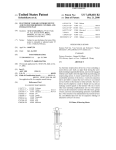

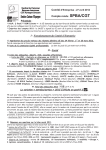
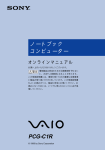


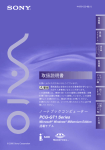
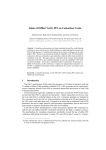
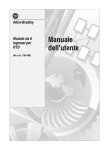
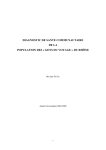
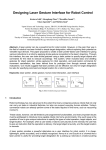
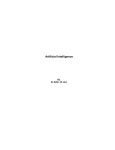
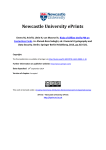


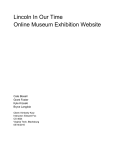
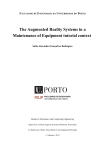



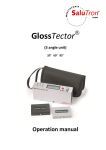
![arXiv:1208.4248v1 [math.AG] 21 Aug 2012](http://vs1.manualzilla.com/store/data/005698705_1-6d8998565962ce68b5a1333eba9cebce-150x150.png)